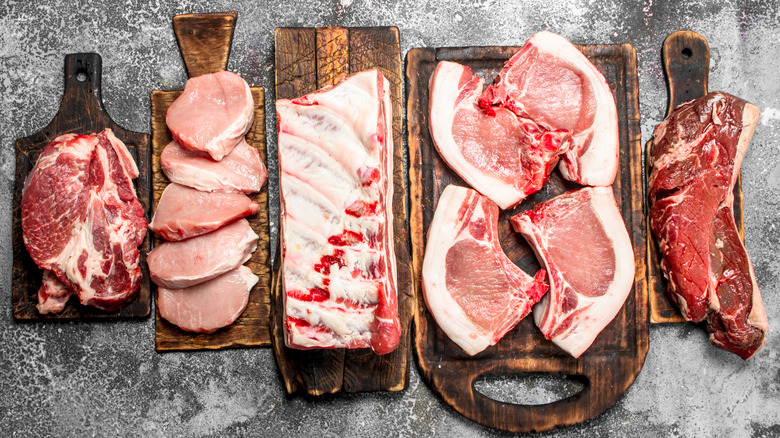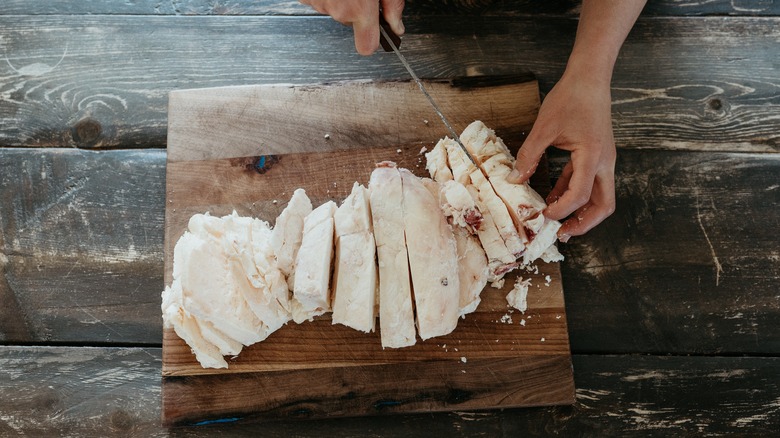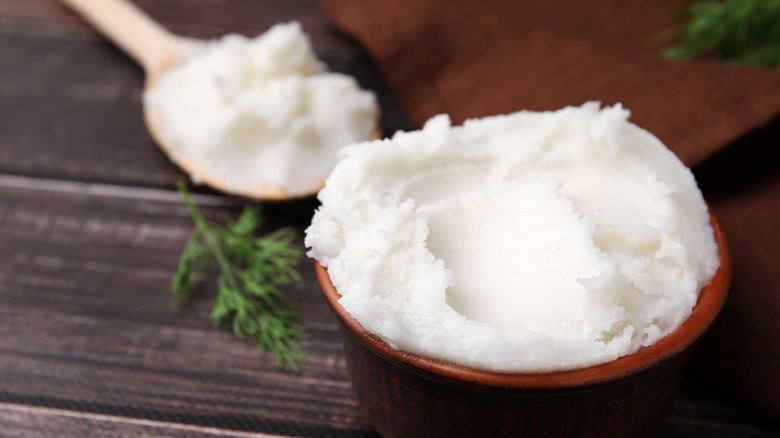Beef Tallow Vs Lard: The Difference, Explained
When it comes to the differences between beef tallow and lard, some are obvious — and others you can only learn from experience. Fortunately, Food Republic was able to sit down with Greg Hozinsky, corporate chef for Coast Packing Company, to learn more specifics about how to use each form of animal fat.
Chefs render lard from pigs and tallow from cows, but aside from their points of origin, the most important differences between the two lie in how to best use each. "Beef tallow is clearly the better choice for frying due to its durability and high smoke point — it handles heat well and contributes to a complex, well-rounded flavor," said Hozinsky. "It's also well-suited for savory dishes like pot pies, sweet breads[,] and icings that benefit from a sturdier fat." Beef tallow is famous for its deep-frying advantages, so much so that people flock to fast food chains with beef tallow fries.
"Lard is a better pick for traditional baking, such as cookies or tender pie crusts that require a softer fat and benefit from the richness of pork flavor," Hozinsky continued. He went on to point out that its softer texture makes it "easier to work with" for creaming techniques where you take room temperature animal fat and combine it with other ingredients. However, keep in mind that any time you work with animal fat, you have to compensate for any flavor changes it may make to your dish.
Beef tallow is a neutral fat that's great for frying
You can make beef tallow in air fryers, old school heavy-bottom pots, over an open flame, or on your stovetop. It's so easy that, provided you filter it once or twice, just about anyone can keep this cooking fat on hand. The best uses for it involve high temperatures — think deep frying, searing steaks in a pan, or roasting ingredients over a hot flame. While you can use it like lard in baked goods, keep in mind that it won't add quite as much flavor, and you may be losing out on a cooking fat with a 420-degree Fahrenheit smoke point.
"Its flavor is beefy but relatively neutral, adding depth without dominating a dish," said Greg Hozinsky. Unlike lard, you may not even taste it and only notice a distinct umami note in your dish. However, if you need a delicate texture, Hozinsky was quick to point out that lard may be the better option. This is especially true if your dish is something like cornbread where additional flavors may help kick it up a notch and bring out more flavor.
Lard is best for pastry
Just like beef tallow, rendering lard from pig fat is dead simple. Provided you apply low and slow heat and filter it afterward, you'll be left with a jar of soft fat just waiting to be added to everything from bread to steaks. Since lard has a lower smoke point than beef tallow, use it whenever you don't intend to sear or roast your recipe.
Unlike beef tallow, however, you will absolutely notice when it's in a dish. Greg Hozinsky told us that while lard's soft texture makes it great for baked goods, it also has a "more pronounced pork flavor." It's key to making restaurant-quality flour tortillas, and you can even use it to add a savory twist to pie crust. Since lard has a smoke point of about 374 degrees Fahrenheit, it's not a horrible choice for deep-frying, but it certainly isn't as durable as beef tallow. If you want to bake with it but don't need to cream any ingredients, you could always warm some up on the stove and drizzle it throughout a batter or before you knead a dough, cutting gluten strands short and keeping your baked good nice and soft.



